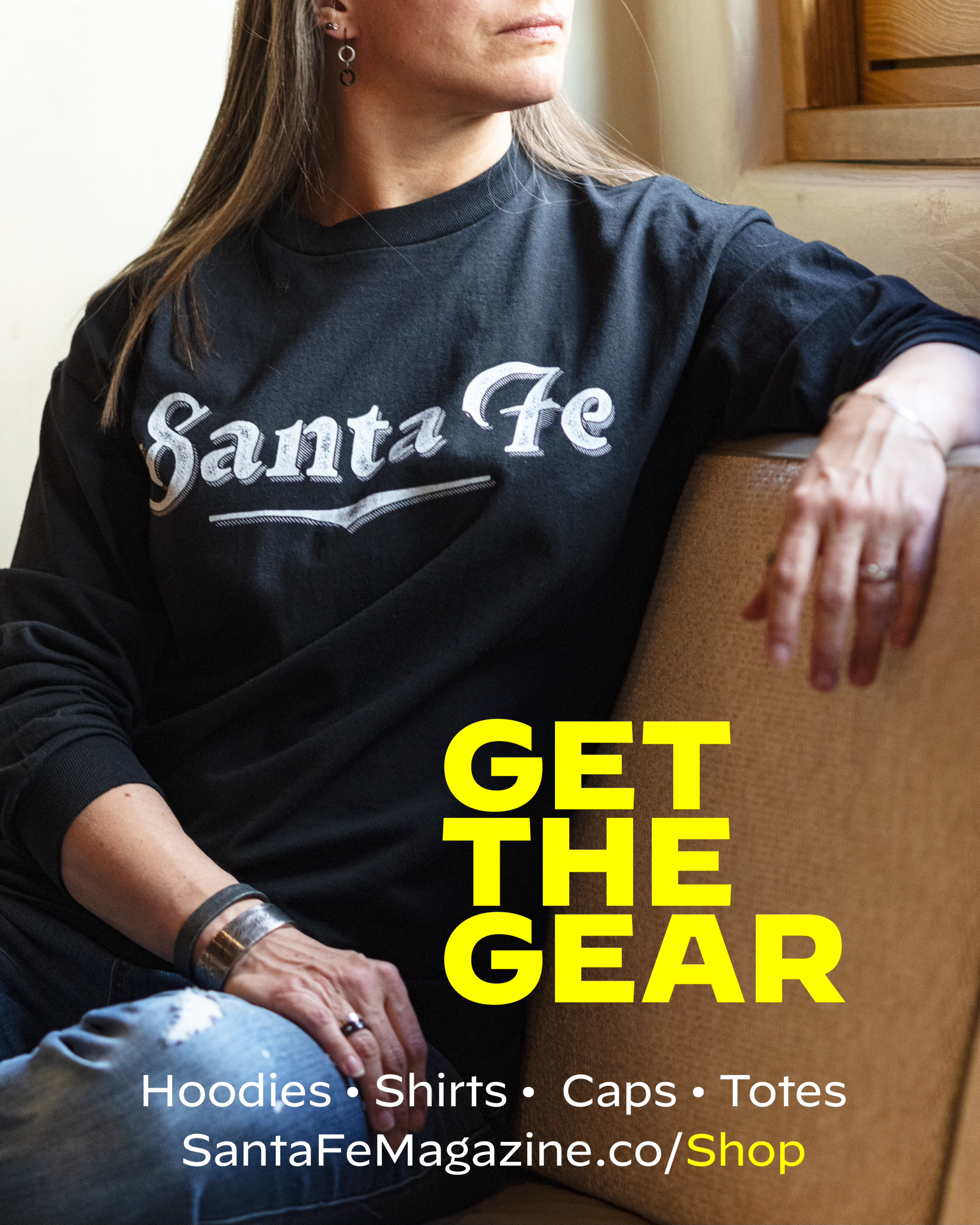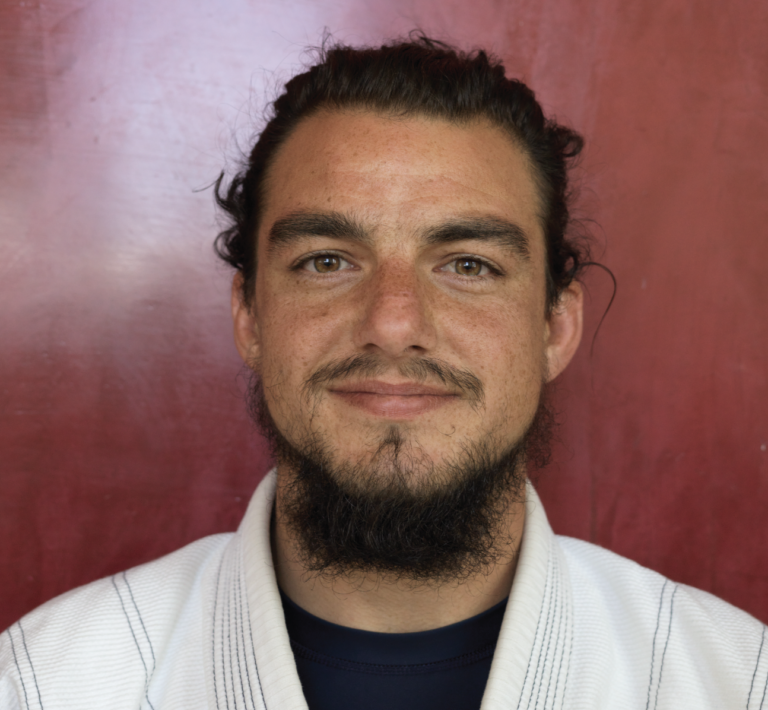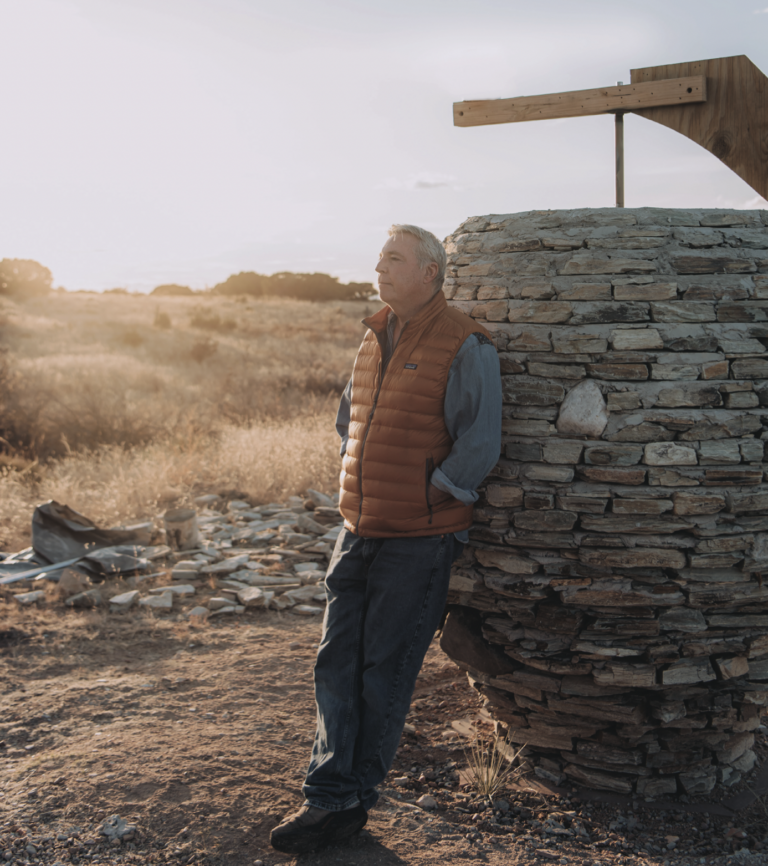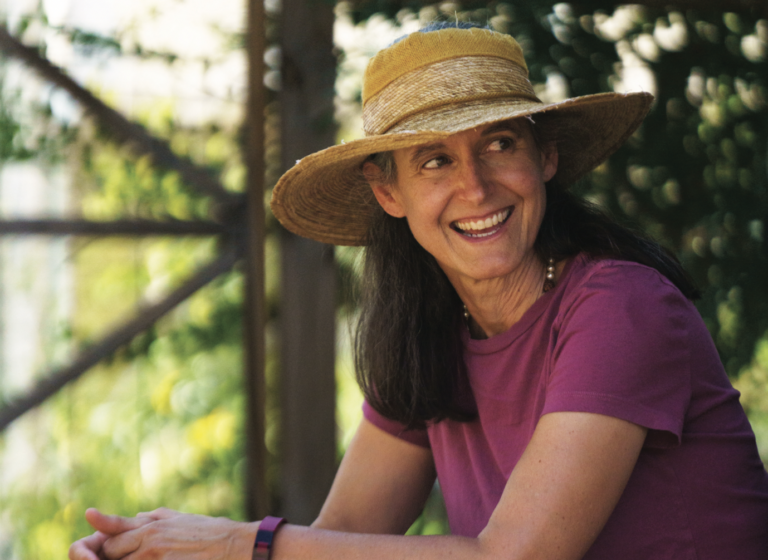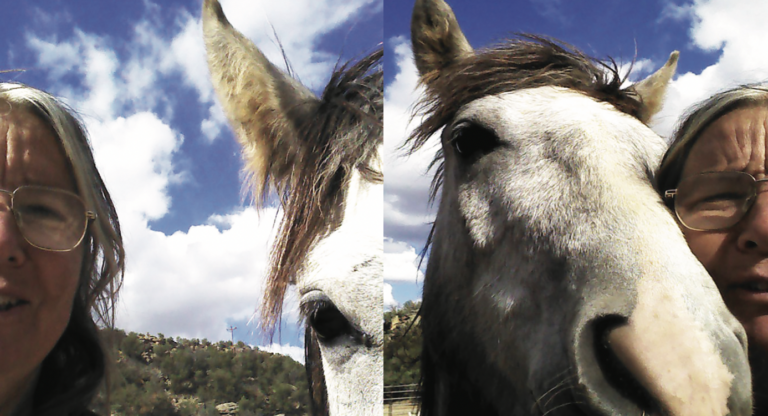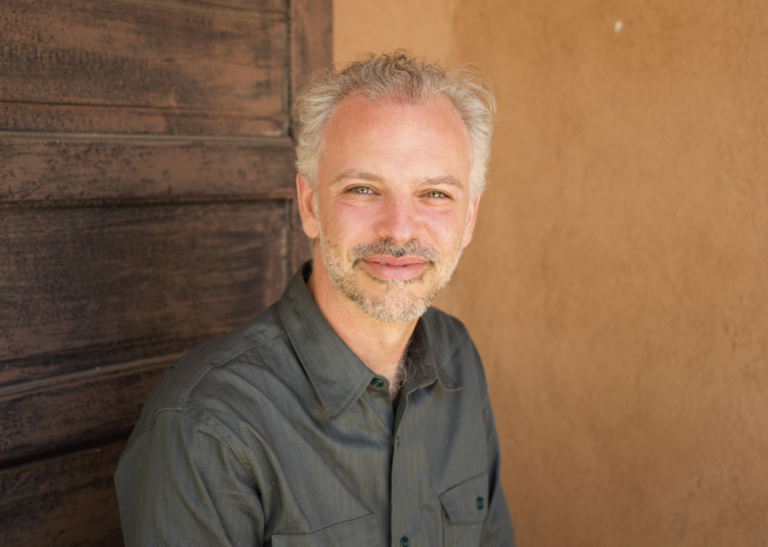RIGHT OFF OF CALLE DE COMERCIO, just up from El Ice Plant, a man sits in an industrial studio crammed to the rafters with large metal sculptures, art books, vats of hot wax, torches, an old MacBook, guitars, and a simple hotplate currently heating a burrito. This is the home and studio of Laird Hovland, who – like Le Corbusier and Salvador Dalí before him – is a student of sacred geometry.
His sculpture, jewelry, and wax candles are all based on the Golden Ratio. To eat, he does castings for Roxanne Swentzell (mother of Rose Simpson, btw), employing the “lost wax method” from the third millennium BC, which involves “thinking inside out and backwards,” as he says. And he washes dishes at a catering company around the corner.
“Anyone who has an experience of mystery knows that there is a dimension of the universe that is not that which is available to his senses.” –JOSEPH CAMPBELL
It’s interesting, the concept that there are aspects of geometry that are sacred. Does that mean others aren’t? I think if anything’s sacred, it’s all sacred. I don’t know why we think we can separate the sacred from the profane. In nature, there is no profane. But there is the Golden Ratio. It’s a naturally occurring phenomenon, illustrations of which can be seen in sunflowers and pine cones, in the arrangement of branches on plants, in the veins of leaves, in the geometry of crystals, in the proportions of chemical compounds, and in the human body.
These mathematical formulas are fundamental through nature, and I create geometric solids in alignment with them, shapes that have resonance with nature. When I was in my early 20s, I was hanging around the beach in San Diego, and I started noticing spirals, shell shapes, and came up with a formulaic way of making them. Then I found the Golden Ratio. Although I never studied geometry or did well in any math or science or any of that. Lately, I’ve been working with the Merkabah. It’s a Hebrew word that means “chariot” from the Old Testament when Ezekiel had a vision of God’s chariot. If you further break the word down phonetically, it translates to “light, body, spirit.” The Merkabah is a symbol, a shape made by two intersecting tetrahedrons. It’s a three-dimensional, six-pointed star. And it’s considered sacred geometry. The human body projects an energy field which takes the shape of a Merkabah. So they say.
“Something beyond this is familiar as well, some mystery. Often I feel I’m on the edge of knowing what it is. It’s just beyond reach; something that touches me deeply. I can’t quite get it and hold it. Does anyone know what I mean?” —DON DELILLO
I’ve also been basing shapes on the math of the Fibonacci sequence from the 12th century. This is where each number is the sum of the two preceding ones, starting from 0 and 1. With these shapes, you begin to discover something people resonate with. Not intellectually, but deeper. I take the formulas – the Golden Ratio, Merkabah, Fibonacci – and this math dictates the shapes I make. I repeat them in fractal manner, as nature does, and they do seem to resonate or remind people of something they recognize but can’t quite put their finger on. This is what the formula looks like. This is what the math looks like. And we seem to recognize it in some way, on a level that isn’t literal or representational.
The idea is to connect people to the formulas of the universe – or really, the universe itself. Because people don’t feel connected. And my work is an attempt to retrieve that connection, to ignite more connection.
Then there’s another message in the work, one that’s very geometrical, very angular, not that much like nature at all. This is a juxtaposition of contemporary industrial with the organic.
These have a feeling of an archaic object, something that was dug up, maybe an unidentifiable, previous technology. So here we’re talking about the organic- ness of technology, the fact that it too dies. That all we build crumbles.
“How in the hell could a man enjoy being awakened at 8:30 a.m. by an alarm clock, leap out of bed, dress, force-feed, shit, piss, brush teeth and hair, and fight traffic to get to a place where essentially you made lots of money for somebody else and were asked to be grateful for the opportunity to do so? ” —CHARLES BUKOWSKI
I don’t get it. We are the only species that works for other members of the species. Maybe bees. I live in my studio, I live as cheaply as possible because my life has been about how to make more art. I’m not interested in collecting things. It’s not always popular, but I’m really an anti-capitalist from way back.
Money is our huge problem. Ever since I was five years old, I just thought this was an insane system, a system of cruelty.
“The supreme good is like water, which nourishes all things without trying to. It is content with the low places that people disdain.”
—TAO TE CHING
I moved here in 1987. It was a lot dustier then. But it’s a great place to live. Of course, we all wish it wasn’t so expensive or hard to find work, but I love the people. This is where my people are; I don’t know where else I could be. That connection matters a lot. And I think an important aspect of creativity is understanding – and having a little bit of humility – about your place in the world. Nobody ever got to the top on their own. You need help. To me, ego gets in the way. If I think about my work, it’s not really about me, it’s not my work, it’s a little bit impersonal in that I’m not saying really anything about myself. I’m saying that I am what we are, which is all one thing. And what I create is designed to induce that introspectiveness – and that connection.
Learn more at LairdHovland.com
Photo John Carr

